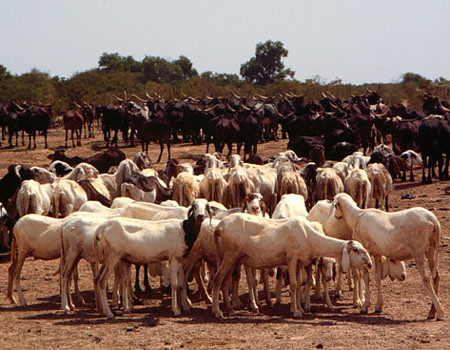 |
| Livestock at a watering hole in Niger. A new report identifies priority areas for government investment towards improving the quality of livestock data in Africa (photo credit: ILRI). |
The Livestock Data Innovation in Africa project has published a new report (May 2012) that reviews the results of a global online survey that was carried out to identify priority areas for investments to improve the quality of livestock data.
The survey was carried out between January and February 2012 among 641 livestock stakeholders including researchers, donors, government officials from livestock ministries or departments, and officials from non-governmental organizations and private companies.
The objectives of the survey were to:
- rank the main areas in the livestock value chain where livestock-related data and information are needed;
- review stakeholders' perceptions of the quality of available livestock data and indicators; and
- identify priority areas along the livestock value chain where investments are needed to improve the quality and quantity of livestock data and indicators.
The findings of the report, Core livestock data and indicators: results of a stakeholder survey, will provide governments with information on the critical gaps in livestock data.
In addition, the results will feed into the process of developing a minimum set of livestock core data that governments should collect, as mandated by the global strategy to improve agriculture and rural statistics.
The Livestock Data Innovation Project is sponsored by the Bill & Melinda Gates Foundation and jointly implemented by the World Bank, the Food and Agriculture Organization of the United Nations (FAO) and the International Livestock Research Institute (ILRI), in collaboration with the African Union Interafrican Bureau for Animal Resources (AU-IBAR).

You may be interested in this, ahem, rumination on livestock (and other) data http://agro.biodiver.se/2012/05/finding-your-way-in-the-agricultural-spatial-data-jungle/
ReplyDeleteThanks, Luigi. You raise a very valid point about the need for a more harmonized, user-friendly approach to sharing of spatial data on livestock. I will share your views with colleagues at ILRI working on GIS data management.
DeleteNote that Caroline Bosire (PhD student at ILRI) is currently working with Mohamed Said on the compilation of spatial data describing the distribution of livestock in Kenya from the 1970s onward
ReplyDelete